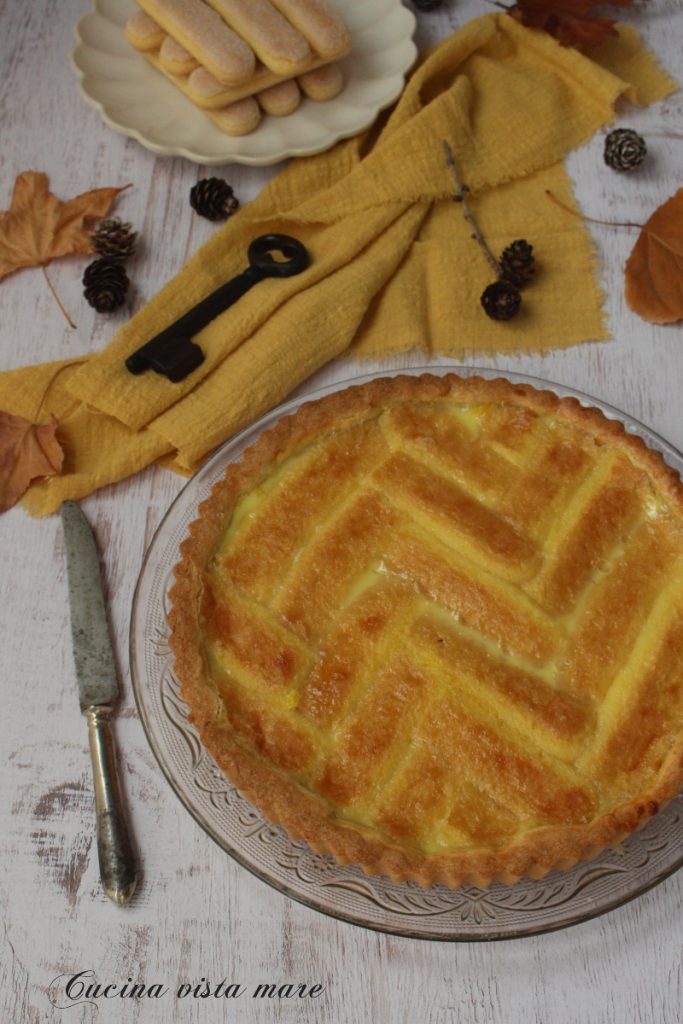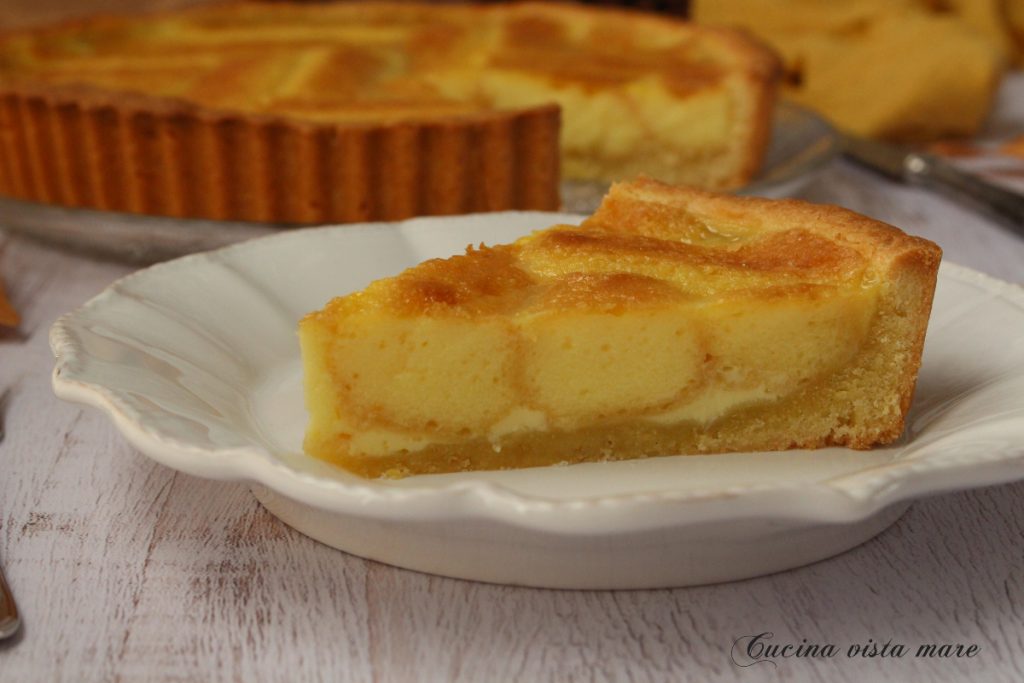The Beneventan tart or Portuguese cake is said to have origins in Campania, more precisely, as the name suggests, it is a typical dessert of the province of Benevento. Now, my in-laws are originally from the province of Benevento, but they have never heard of or tasted this cake. What do you think? Is this tart Beneventan or not? I’ll tell you what I discovered at the bottom of the article in the curiosities section. Meanwhile, let’s talk about the Beneventan tart: a shortcrust pastry base, a filling of ladyfingers, and a cream with a hint of Strega liqueur (this is a clue), a crunchy shell for a soft heart. Whether it’s Beneventan or not, it’s worth trying!
Don’t miss it

- Difficulty: Medium
- Rest time: 40 Minutes
- Preparation time: 40 Minutes
- Portions: 8 people
- Cooking methods: Oven, Electric Oven
- Cuisine: Italian
- Seasonality: All seasons
Ingredients
- 2 cups all-purpose flour
- 1 cup powdered sugar
- 10 tbsp butter (at room temperature)
- 2 tbsp egg yolks
- 1 tsp vanilla extract
- 1 lemon (grated zest)
- 1 pinch salt
- 2 cups milk
- sugar
- 3 medium eggs
- 1½ tbsp Strega liqueur
- 1 lemon (grated zest)
- 15 ladyfingers (approximate)
Tools
- 1 Kitchen Aid Artisan Stand Mixer
- 1 Rolling Pin with Thickness Rings
- 1 Saucepan
- 1 Kitchen Thermometer
- 1 Bowl
- 1 Cooking Spatula
- 1 Whisk
- 1 25 cm Tart Pan
Steps
In the stand mixer bowl with the paddle attachment, insert the butter at room temperature, cut into pieces, and the powdered sugar. Start mixing until you get a cream, then add the egg yolks, vanilla extract, lemon zest, a pinch of salt, and finally the flour. Mix until the dough comes together, then transfer it to the work surface and knead a little with your hands until you get a smooth and homogeneous dough: this operation must be done quickly to avoid overheating the dough. Form a ball, flatten it, and roll it out with the rolling pin between two sheets of parchment paper to obtain a disc 12 inches in diameter and 1/8 inch thick. Place it in the refrigerator for thirty minutes.
After the resting time, line a 10-inch tart pan with the shortcrust pastry disc, making sure it adheres well to the edges, and place it back in the refrigerator.
Pour the milk into a saucepan and heat it to 104 °F, then pour it into a bowl. Dissolve the sugar by stirring. Add the eggs and lemon zest, stirring everything with a whisk gently and without incorporating air. Set aside and let it cool.
Bring the shortcrust pastry shell back to the work surface, prick the bottom with a fork (I forgot to do this, but it’s better to do it) without going through the dough, and arrange the ladyfingers inside in a “herringbone” pattern, cutting them to the size needed to fill the gaps. Finally, pour the cream over the ladyfingers a little at a time. It is a liquid cream, so allow time for the ladyfingers to absorb it before adding more. Let the tart rest for ten minutes so that the ladyfingers absorb the cream well.

Bake the tart in a preheated static oven at 340 °F for 45 minutes. Once the cake is cooked, let it cool before serving.

Curiosities
Although the web claims that this tart is from Sannio, Beneventan, I have some doubts about its origins. Searching among the typical and traditional desserts of the province of Benevento, the Beneventan tart is not mentioned: pigna, puccellato dolce, nougat, susamielli, calzoncelli but no Beneventan tart. It is probably possible that some Beneventan lady made it or that it is on the menu of some restaurant. Maybe Beneventan because the cream contains Strega liqueur made in Benevento. In short, I haven’t untangled the skein surrounding this dessert. If any readers from Benevento know more about it, I would appreciate it if they shared it in the comments.
Notes
This content contains one or more affiliate links.
Recipe source: HERE.

